In-Store Marketing: Definition, Examples, and Strategies
The business landscape is constantly changing across all industries, but brick-and-mortar companies face the worst of it. Not only do they have to compete with other stores, but they also have online businesses to deal with. The only companies that have survived this have been using in-store marketing.
After all, you probably don’t hesitate to invest in traditional and digital marketing to bring customers to your store.
But have you made any preparations for once they’re inside your store? That’s where the real conversion happens! This article is the perfect place to start if you want to learn how.
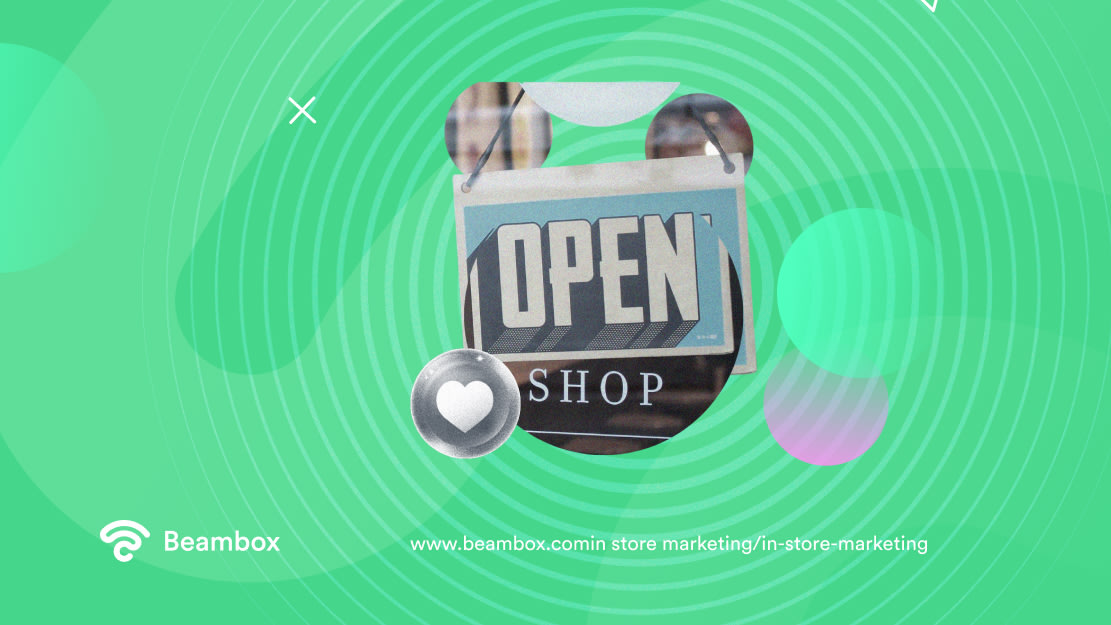
What Is In-Store Marketing and How Does It Help You?
It seems like a new marketing type pops up every time you sit down to do your research, doesn’t it? Well, you’re dealing with a huge target market, and not everyone has the same preferences.
A mix of marketing strategies or a change in tactics is part and parcel of this situation. In-store marketing is one such tactic where you promote your products and services within your physical space.
A common example of this is PoS Marketing, where stores try to increase margins by placing tempting products near the counter. But promotions are not the only goal. This type of marketing also provides a wholesome shopping experience, guiding customers through every step.
They can have the answers to their questions at a glance with as few live interactions as possible.
But even then, in-store marketing is more personal than other forms. After all, customers are inside your store when they see these signages. They can have live interactions with you if they want. But with social media, both you and your customers are behind the screen, taking away that physical touch.
Besides, in-store shopping is different from online ventures. When people are physically shopping, they might end up in your store while searching for something else.
Plus, if you’re looking for ways to increase your market share, this marketing could be an easy and economical option.
Apart from your venue, this type of marketing can also help sell your products in other stores. For example, you created a beverage and displayed it in a grocery store that also sells other beverages.
Not everyone will be displaying their ads there. Now, if you want to place your signages and create irresistible offers, you’ll be able to stand out from the crowd.
In-Store Marketing Ideas That Will Never Go Old
Now that you know what in-store marketing is, it’s time to dive deeper. Data reveals that 85% of retail sales in the US still happen mainly in physical stores. Chances are the stores that are making these sales use in-store marketing of some form.
Why not use the same thing and pull some of the sales to your side? But you’re not alone if you’re hesitant to start.
There are so many options that creating the right campaign sometimes overwhelms even the best of marketers. So, here are six in-store marketing ideas to help you.
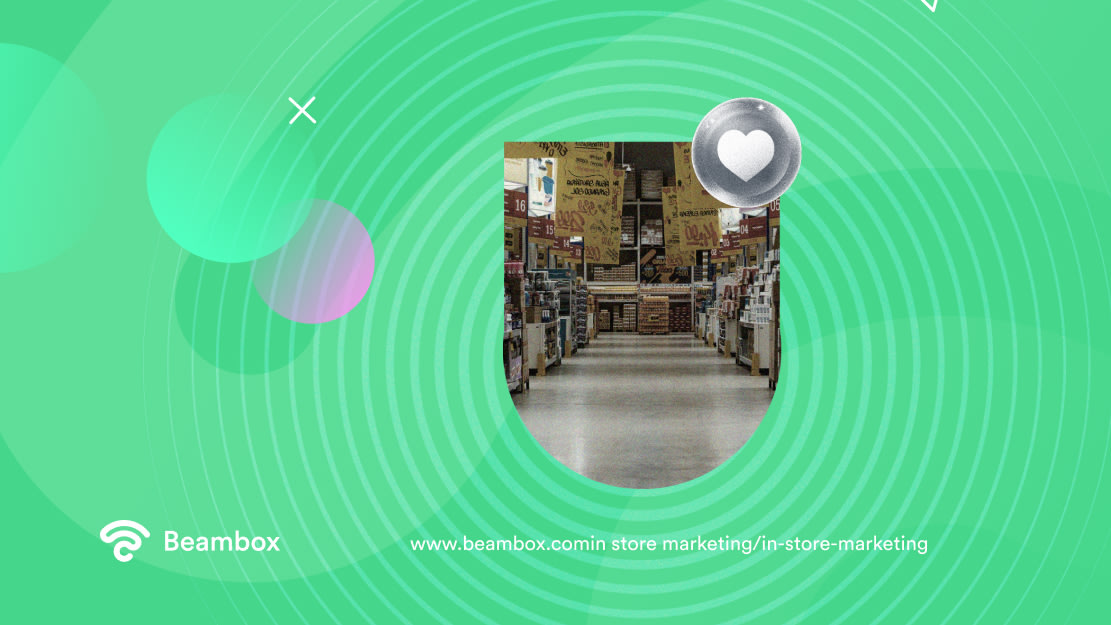
Use Indoor Maps and Signage To Steer Customers in the Right Direction
The first idea is to steer customers in the right direction. Treating in-store marketing as an aggressive salesperson rather than a polite guide will never work in your favor. It will make customers feel like you only care about your sales, which isn’t good for their overall experience.
But how can you present yourself as a guide? The answer lies in using indoor maps and signage.
Customers shouldn’t feel lost when they enter your venue. Making your products easier for them to find will actually increase your chance of making a sale. Frustrating a customer will only steer them away from your store.
So, create a map of your venue, especially if you have a large space. Let people know where to find what.
You can also display important information on signage. For example, if you’re planning to raise the prices after some time, you can let customers know.
Or if something isn’t in stock, display a sign about when it will be available again. Plus, nobody likes waiting in long lines. Telling customers how much time each checkout point will take can create a special place in their minds.
This way, you’ll be able to give them an unforgettable experience by making them feel like you care.
Plus, it doesn’t even have to be anything extensive. A simple banner, placard, or poster will work just fine. But if you want to make this idea more interactive, you can use digital signage. You’ll also be able to change the information in real-time in case something comes up.
Augmented Reality Can Bring Your Products to Life
Business owners often make the mistake of thinking in-store promotions are only about posters and signs. Just because your focus is on marketing efforts that work inside the store doesn’t mean you should let go of technology.
While it might still be hard to do, introducing augmented reality can completely change the shopping experience. Let’s see how.
Firstly, you can let customers virtually try your products before they make an investment. For example, if you own a clothing store, you can create virtual try rooms. The same goes for makeup brands, where people can try on the products virtually before taking them home. Sephora is one such example.
Secondly, AR can come in handy if you’re in a business where customers need extensive tutorials to use your products.
You can’t possibly write everything on a sign or digital display near the product. But with an AR or VR marketing tool, you can convey that information to customers once they scan the product.
Thirdly, you can let customers pay directly through their phones instead of having to wait at the checkout.
For example, once customers are ready to buy, they can scan all of the products one by one. Then, you can show them markers to make payments directly from their phones.
While these technologies might require IT expertise to implement, you can start to look into them to get an edge.
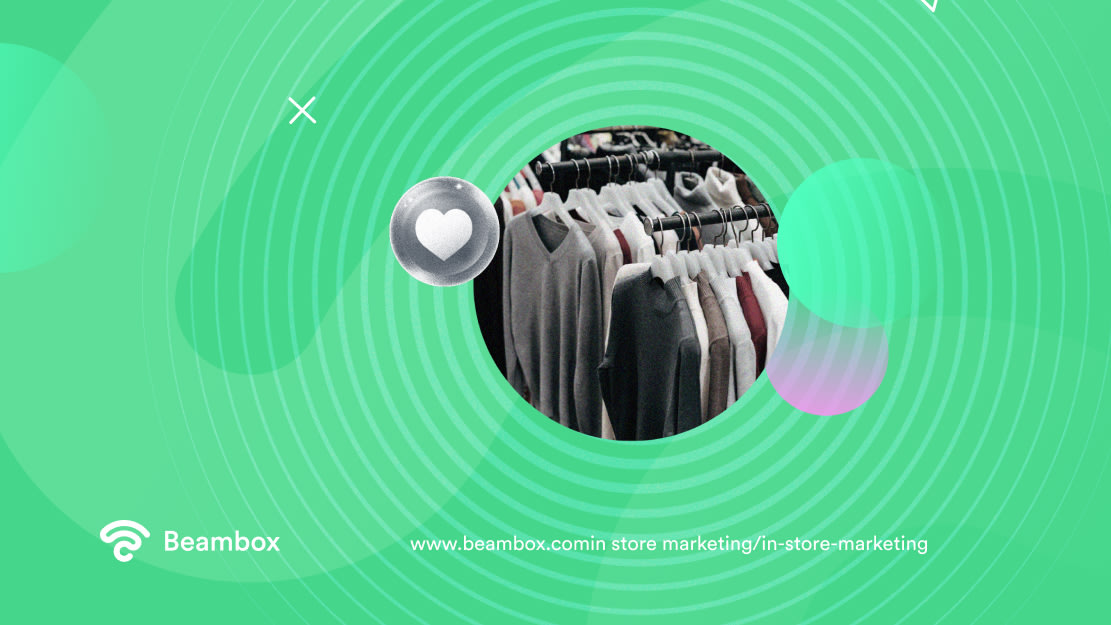
Personalized Campaigns Always Work Better for In-Store Displays Marketing
After signage, maps, and augmented reality, let’s talk about something that can make or break your efforts.
Personalizing your marketing campaigns sometimes guarantees that they will work. When customers see promotions that match their preferences, they’re more likely to act on them.
Besides, customers now expect you to know their likes and dislikes. In fact, 62% of customers said that ignoring personalization will take away their loyalty to the brand. Here’s how to avoid this.
Start by profiling your customers. Gather their history and data to see what they like and dislike.
There are a number of ways to collect customer data. Building an email list, surveys, and WiFi marketing are just to name a few. Once you have the data, segment it according to demographics, behavior, etc.
Plus, location matters a lot when it comes to marketing in-store.
For example, send them a notification that they’ll get a discount if they visit your store in the next hour. This will create a sense of urgency and fear of missing out. After all, nobody likes to miss a chance to save their money.
Another thing you can do for in-store display marketing is incorporate a voice assistant in your store. Even though this won’t be a human interaction, it can act as a guide to recommend products to customers.
For example, if a customer is looking for denim jeans under $100, they can simply ask the voice assistant.
It can show them where to find the preferred product while recommending some affordable shirts during the process. But because this is expensive, you might want to avoid it when just starting.
Free WiFi Never Fails To Impress
Everyone likes free things, even if it’s just a chance to use your guest WiFi network while shopping in your store. Why not use this to your advantage and create word-of-mouth marketing through your customers? Here’s how that’s possible.
Customers might post selfies and products on their social media through your WiFi. If you’ve displayed something witty or interesting in your store, that will work even better.
It will intrigue and encourage them to share it with their friends. That’s free marketing for you! But don’t forget to ask your customers to tag your page.
Besides, when you offer free WiFi, customers will have to enter their credentials to surf the internet. Things like names and email addresses let you authorize that the request is coming from an authorized person. If you use the right WiFi marketing software, you can collect and use this data in your campaigns.
Now, customers will enter this information into a captive portal. Instead of just being a form, this page is your chance to display various offers.
This is the one page they’ll most definitely come across if they’re trying to log in to your free WiFi. So there’s no chance of missing it. And if your offer matches their taste and preferences, you’re good to go.
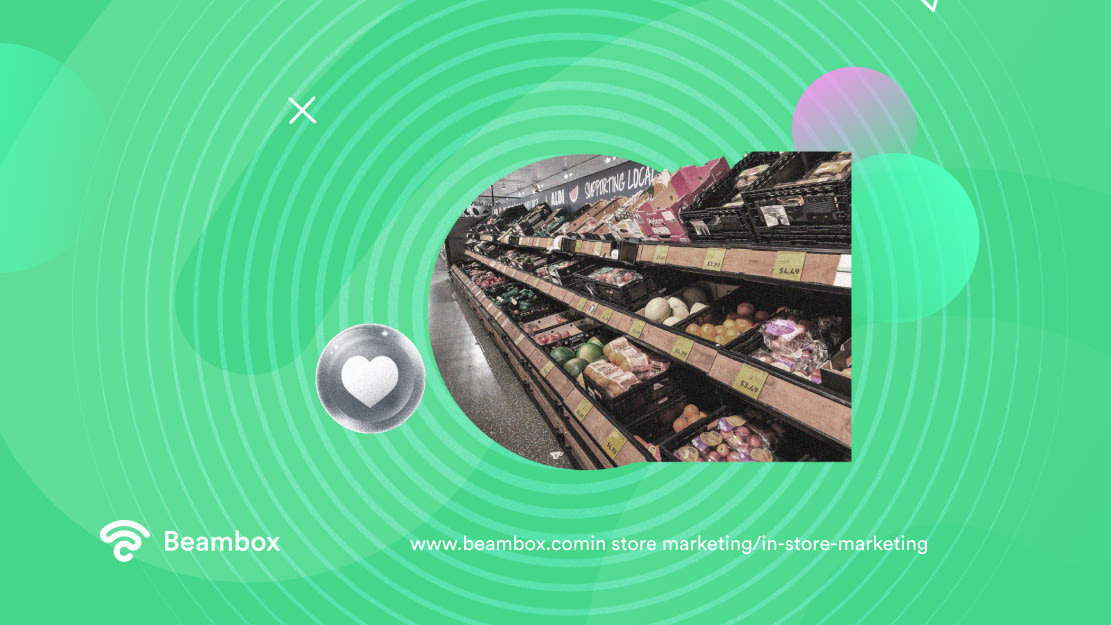
Pay Attention Product Placement
This next idea might seem strange, but merely placing your products in the correct manner can act as in-store marketing. As mentioned earlier, customers shouldn’t have to spend hours just trying to locate your products.
Related items must be near each other. That would make it much easier for customers to browse around.
For example, suppose you own a grocery store. Place all the vegetables together, starting with the items that people buy most regularly. Now, if you place shampoos and soaps in the next aisle instead of fruits, you will confuse the customer.
Someone might visit your store just to buy fruits and vegetables. They’ll be expecting to finish the trip within two aisles. But if these two items are far away, they won’t be visiting your grocery store again!
Alternatively, a clothing store’s window displays will have a great say in whether a customer will visit or not. If you’re in this business, make sure to place the best pieces there to make the customer curious.
However, offers are just as important as product displays. Customers love to buy one and get one free. Or even a small discount on items that they purchase in bulk will work.
For example, you can create a pack of three soaps and offer a 5% discount. You can also use the same concepts for related products like condiments and spices.
Host Events and Contests To Increase Foot Traffic
Let’s end this list with events and contests to entertain and engage customers while they’re visiting your store.
Even if they aren’t ready to buy yet, these interactive events might encourage them to make a purchase eventually. But what type of entertainment should you organize?
Well, firstly, it should be according to your brand. It doesn’t make sense to own a fast-food restaurant and host an event about health awareness. But being a sports company and hosting a cricket match surely does.
Secondly, make it entertaining enough and promote it correctly. If the poster, idea, or ad doesn’t spark a will to attend the event, what’s the use of it? You can also introduce interactive guessing games that people can play on screens. If they guess correctly, reward them with something.
However, tastings and eating competitions would work best for restaurants. So, think about what matches your brand and what your customers will like.

In-Store Marketing Examples To Help You Set Yours
After discussing the ideas, let’s see some in-store marketing examples. Discussing how these brands have implemented some of these ideas will help you shape your strategies.
- TESCO’s Easter Egg Hunt: The first example is from a brand that pulled off a perfect blend of in-store and social media marketing. TESCO changed its logo to replace the “O” with a cracked egg. Then, it prompted people to find these eggs in its stores. Anyone who spotted them, took a picture, and posted on social media got a reward of £1000.
- Audi’s Virtual Reality: Buying a car is a huge investment, especially if you want to customize it. What if you don’t like the design after it’s complete? Audi takes this dilemma away by letting customers experiment with customizations using virtual reality.
- Boots’ Perfect Summer: British summers are something you can never predict. Different weather calls for different essentials. So, boots launched a short TV ad from the perspective of a wasp. It tells customers that it has everything they need for a perfect summer.
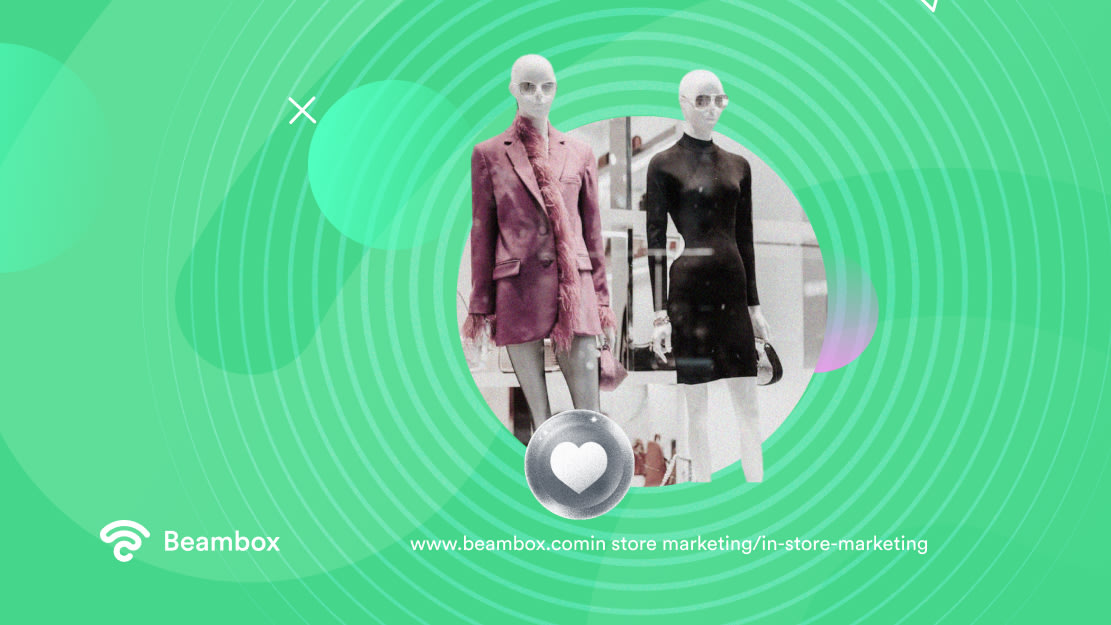
In-Store Marketing Is More Like a Guide Than a Salesperson
By now, it must be clear to you that using in-store marketing as a salesperson wouldn’t be a wise step. Instead, use it to create memorable experiences for your customers and let that get you sales.
If you want to collect data from your customers and automate your campaign by using your WiFi, check out Beambox. It’s a WiFi marketing solution that is helping over 12,000 venues to grow and scale their business. Do you want to be next? Start your free trial now!
Get Started With Free WiFi Marketing
Beambox helps businesses like yours grow with data capture, marketing automation and reputation management.
Sign up for 30 days free


